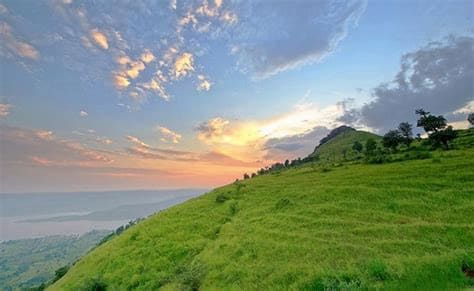What are the key findings?
- Sediment profile dating back to 8000 years which helped decode climatic signatures indicated a relatively reduced rainfall and weak southwest monsoon during the late Holocene (around 2827 years BP).
- The seasonal lake in the Kaas Plateau is probably a product of an erosional localized shallow depression on a pediment (rock debris) developed over the crust.
- During the early to mid-Holocene, at around 8664 years ago, pollen, as well as diatom data, indicated a change in the climate from freshwater to drier conditions with low rainfall.
- Surprisingly, there was a significant rise in the number of diatoms in between.
- This suggests a major shift in the Indian summer Monsoon activity during that time, possibly resulting in intermittent humid periods amidst the dry spells.
- There was a decrease in rainfall and a weakened southwest Monsoon during the late Holocene (around 2827 years BP).
- During the recent past (around last 1000 years), pollen, as well as the presence of a high number of planktonic and pollution-tolerant diatom taxa indicated lake eutrophication, possibly due to human impact and cattle/livestock farming in the catchment.
About Kaas Plateau:
- It is nestled in the Western Ghats is about 140 km from Pune.
- It is part of the Western Ghats which was declared as world natural heritage site by United Nations Educational, Scientific and Cultural Organisation (UNESCO) in 2012
- It is known as Kaas Pathar in Marathi, its name is derived from the Kaasa tree, botanically known as Elaeocarpus glandulosus (rudraksha family).
- It is also known as valley of flowers which is situated at a mighty altitude of 1200 metres.
- It is a major biodiversity hotspot owing to the many varieties of endemic flowers and butterflies that are found here.
Q1) What are the characteristics of the Holocene?
The Holocene is characterized by the relatively stable and warm climatic conditions following the last major glacial period, known as the Pleistocene. It is a time of interglacial climate, marked by a general trend of increasing temperatures.
Source: Sediments decode climate and environmental changes on Kaas Plateau around 8664 years BP
Last updated on August, 2025
→ UPSC Mains Admit Card 2025 will be released soon at www.upsc.gov.in.
→ UPSC Mains 2025 will be conducted on 22nd August 2025.
→ UPSC Notification 2025 was released on 22nd January 2025.
→ UPSC Calendar 2026 is released on 15th May, 2025.
→ UPSC Prelims Question Paper 2025 and Unofficial Prelims Answer Key 2025 are available now.
→ UPSC Prelims Result 2025 is out now for the CSE held on 25 May 2025.
→ The UPSC Vacancy 2025 were released 1129, out of which 979 were for UPSC CSE and remaining 150 are for UPSC IFoS.
→ UPSC Prelims 2026 will be conducted on 24th May, 2026 & UPSC Mains 2026 will be conducted on 21st August 2026.
→ The UPSC Selection Process is of 3 stages-Prelims, Mains and Interview.
→ UPSC Result 2024 is released with latest UPSC Marksheet 2024. Check Now!
→ UPSC Toppers List 2024 is released now. Shakti Dubey is UPSC AIR 1 2024 Topper.
→ Also check Best IAS Coaching in Delhi















